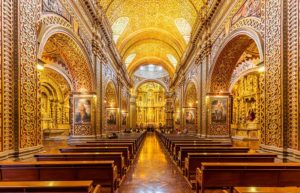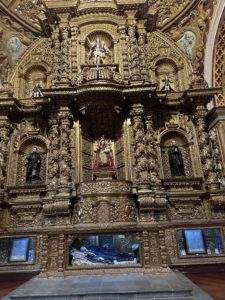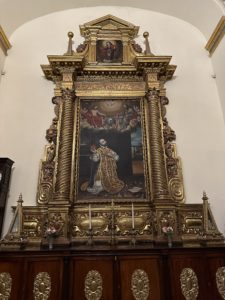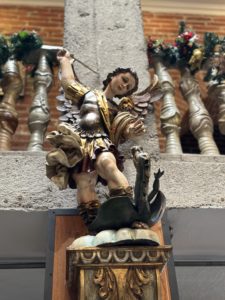Ecuador Capital city Quito is UNESCO Heritage
Nestled amidst the Andes, the heart of Ecuador beats rhythmically within the UNESCO-declared cultural heritage site. On September 8, 1978, UNESCO declared the city of Quito as the First Cultural Heritage of Humanity, acknowledging the extraordinary value of its Historic Center, the largest and best-preserved in Latin America. This majestic city stands out for its topography, culture, and urbanism.

From cobbled streets that whisper tales of the past to towering cathedrals that speak of architectural prowess, the Quito city center is a living testament to the convergence of cultures and histories. Here, colonial plazas adorned with elaborate facades stand testament to the city’s Spanish colonial past. Every corner exudes an air of authenticity, inviting visitors to explore its enigmatic alleys and discover hidden gems.


The crown jewel of Quito’s architectural prowess is undoubtedly the Compañía de Jesús Church, an opulent spectacle of Baroque artistry. Its gilded interior, adorned with intricate designs and vivid paintings, captivates every visitor, offering a glimpse into Quito’s colonial splendor. this church is cover in gold, that is why it is so shinny to the eye.




The iconic Plaza Grande stands as the nucleus of the city center, surrounded by majestic buildings that house the Presidential Palace and the Archbishop’s Palace. It’s a bustling hub where history and contemporary life converge—a place to witness Ecuador’s political pulse amidst the echoes of the past.


Wandering through the streets, one encounters indigenous marketplaces bursting with vibrant colors and echoing with the melodies of local artisans. The aromas of traditional Andean cuisine waft through the air, inviting passersby to indulge in the flavors of Ecuador’s gastronomic heritage.

The city center isn’t just about architectural wonders; it’s a living, breathing cultural tapestry. Museums and galleries offer insight into Ecuador’s diverse heritage, from pre-Columbian artifacts to contemporary art, preserving the country’s rich cultural legacy.






Venturing uphill, the panoramic vistas from El Panecillo reveal a breathtaking view of the city’s red-tiled rooftops, framed by the towering Pichincha volcano—an awe-inspiring sight that encapsulates Quito’s natural beauty and historical grandeur.

Quito’s city center isn’t just a destination; it’s an immersive experience—a convergence of history, art, culture, and tradition. It’s a testament to the enduring legacy of a city that proudly embraces its past while embracing the rhythms of modernity.

Visiting the Quito city center isn’t merely stepping into history; it’s an invitation to become part of a living heritage, to explore, to learn, and to immerse oneself in the vibrant tapestry of Ecuador’s cultural soul.



